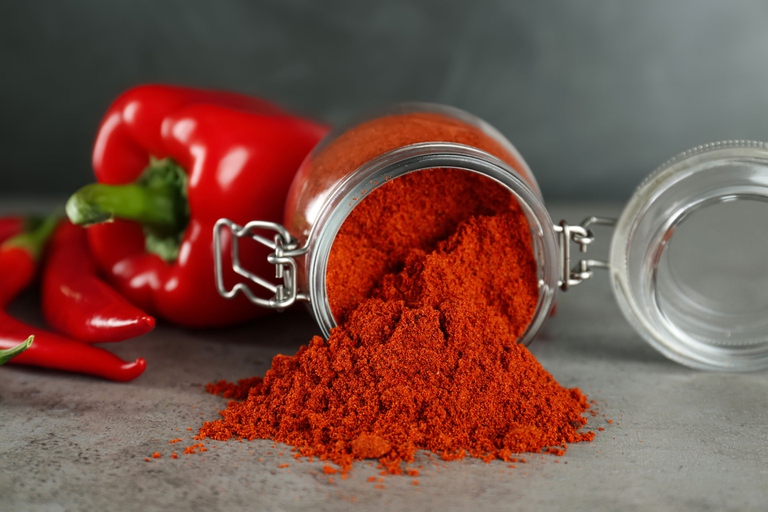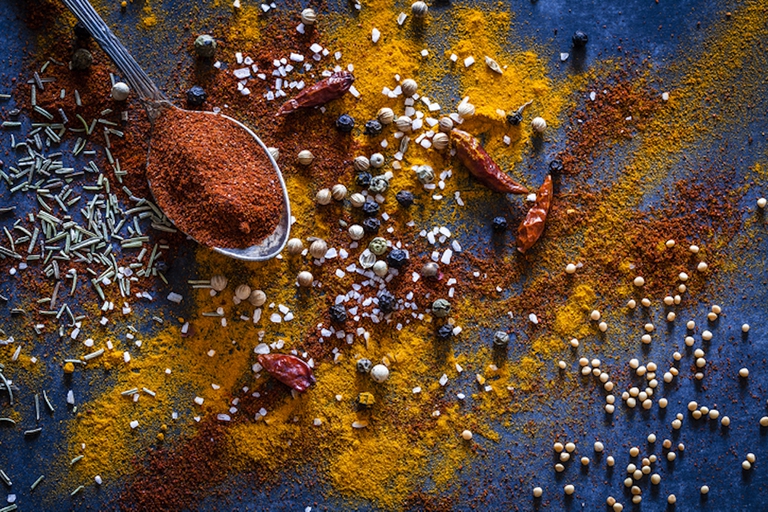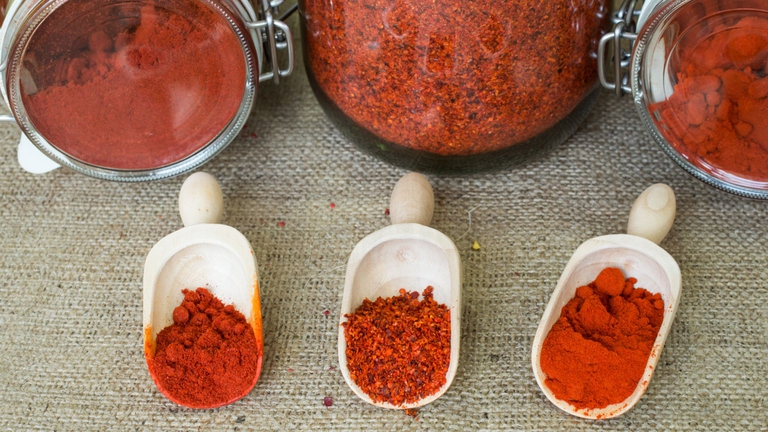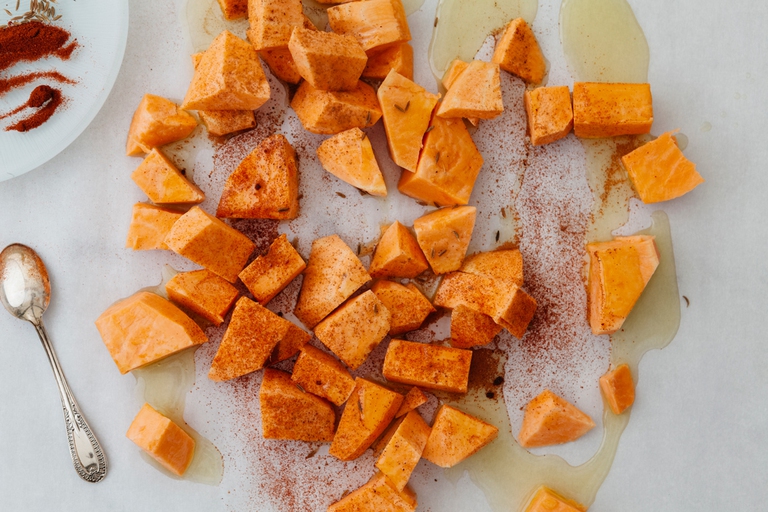https://www.lifegate.it/paprika
- |
- Paprika is a spice obtained from fruits of the Capsicum genus, better known as peppers and chili peppers.
- Although used in modest quantities, it has noteworthy and beneficial properties for health.
- Divided into different aromatic types, it is a winning ingredient and can enrich various preparations.
There paprika it ranks among the most interesting spices in our culinary panorama.Typical of Hungarian cuisine and a distinctive feature of some traditional dishes, this spice is now in common use in our country too.It boasts rather marked organoleptic notes, while there is no shortage of interesting compositional characteristics, sometimes associated with health aspects.
Things to know about paprika
It is a spice that is definitely recognizable for its strong aroma.Paprika appears as a powder with strong shades, tending towards red-orange, and is obtained from plants of the genus Capsicum, the same ones that produce common peppers and chillies.

How many types of paprika are there
Depending on the raw material used, this spice can be divided into several types:
- Sweet paprika, is obtained from rather delicate varieties of peppers in flavour.In this case, the fruits are dried and ground after removing the internal filaments and seeds.This type of paprika, which appears as a reddish powder, has a marked aroma.
- Strong paprika, a typical ingredient of Hungarian goulash, is generally spicier and is obtained by processing the pepper as a whole, including the seeds.The starting plant varieties are more pungent in flavor and give the spice an intense hue.
- Smoked paprika, is obtained from smoked peppers left to dry.It is mostly used in Iberian cuisine.
- Depending on the starting plant varieties and the processing used, intermediate powders in the aroma are also obtained, such as semi-sweet paprika.
Difference between paprika and chili pepper
In any case, paprika and chili powder they are not the same thing.The latter, also used as a spice, is obtained from very spicy varieties of chilli pepper, and its production never excludes the fractions of the fruit rich in capsaicin, responsible for the strong spiciness.

Nutritional values
Being a spice, paprika is generally used in rather modest quantities.The nutritional values of a standard amount of two grams, equal to the contents of a teaspoon, are quite negligible.The energy content is equal to 7 kcal, for a very small intake of carbohydrates, vegetable proteins and unsaturated fats.Among the vitamins, the beta-carotene and the vitamin C, while between minerals potassium, iron and phosphorus appear more abundant.
Property
Obtained from the Capsicum genus, paprika boasts an interesting content of bioactive components.Among these are highlighted various carotenoids, such as beta-carotene, mentioned previously, zeaxanthin, capsanthin and capsorubin.Overall, such substances give the spice some properties potentially beneficial to human health.Among these, that one stands out antioxidant, which can be protective for the body by counteracting free radicals.These, specifically, are produced in our body during cellular metabolism.
By providing capsiate, a substance similar to capsaicin, paprika could promote body weight control.Capsiate, in fact, seems to be associated with an increase in metabolic rate and oxygen consumption, as well as a reduction in fat accumulation.However, these would be rather mild effects, to be seen also in the context of overall nutrition.The carotenoids in paprika might also work with cardio-protective effects, since they seem to be associated with the increase in “good cholesterol”.The same components also act on the mechanisms of inflammation, reducing theaccumulation of pro-inflammatory mediators.

According to laboratory evidence, some components of this spice, such as capsanthin, capsorubin and beta-carototene, would act as tumor growth inhibitors.The contribution of bioactive substances, as well as the potential benefits deriving from them, are appreciable with a certain continuity of intake.The consumption of paprika, however, must be included in the context of a balanced diet with varied choices.
How to use paprika in cooking
The uses of this spice are multiple, ranging from the simple flavoring of dishes to its use as a basic ingredient.Generally speaking, paprika comes used to enhance the flavor of the tubers, like the communes potatoes, and gods vegetables, mostly in baking.
Alone or together with other herbs and spices, it lends itself to seasoning meats and especially white ones.More imaginative recipes propose paprika as an ingredient in pasta dishes, especially in association with fresh cheeses (ricotta) or seasoned.Also appreciable in cream based creams orange vegetables (pumpkin, carrots) e sweet potatoes, to accompany courses of prawns or cuttlefish.It's possible also add paprika to the dough, obtaining flavored variations of focaccias and other similar preparations.

Contraindications
Although it is used in limited quantities, paprika could still be associated with adverse effects, being, in some cases, contraindicated.The hypersensitivity reactions, for example, can arise even from very small doses of an allergen.Allergy sufferers, therefore, should pay attention to the consumption of spices such as paprika, taking into account the cross allergies.Among other things, its consumption is contraindicated in conjunction with hemorrhoidal disease and gastric problems, such as reflux and gastritis.
FAQs
- What is the difference between paprika and chili pepper? Paprika is obtained from varieties of not very spicy peppers, often deprived of the internal part which contains capsaicin, the substance responsible for spiciness.Chilli powder, on the other hand, always includes the seeds and internal filaments of the fruit, and is obtained from fruits richer in capsaicin.
- How spicy is paprika? The degree of spiciness of this spice depends on the starting fruits and the relative processing.Some types are therefore spicier than others, without reaching very pungent levels.
- How many types of paprika are there? The main types include sweet, semi-sweet and strong paprika.Smoked paprika represents a further type, and is typical of Iberian cuisine.The differences lie in the varieties of pepper used and in the processing procedures.
- What is paprika good for? Rich in bioactive components, it boasts antioxidant, anti-inflammatory and cardio-protective effects.
- Where can you put paprika? It can be used to enhance the flavor of vegetables, tubers and meats.Other recipes use this spice as an ingredient in focaccias, cream soups and first courses.
